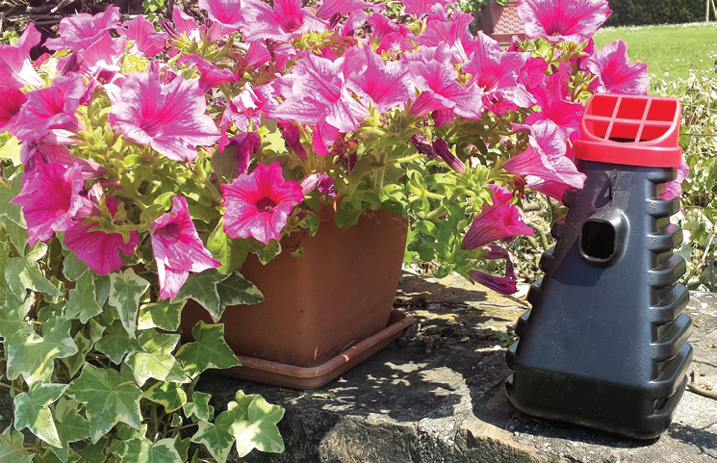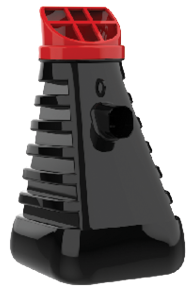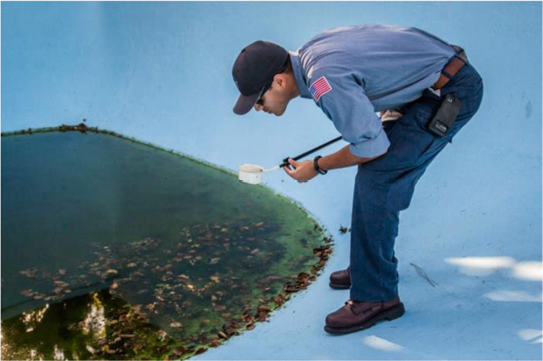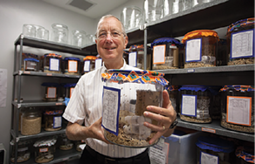
Research, development and discoveries uncovered in university laboratories and field studies are often painstakingly prepared for scientific journals — and then archived online or shelved. But the Inzecto mosquito ovitrap story bucks that old trend. What began as a seed of an idea from Italian businessman and product innovator Enrico Paolo Levi landed on Urban Entomology Professor Dr. Phil Koehler’s desk at University of Florida.
Industry, meet academia.
Then came university licensing and patents — highly unusual within ivory towers, Koehler said. Next investors came on board, including former chairman and CEO of 3M Sir George Buckley and the Stayer Family Office, owners of Johnsonville Sausage. The United States Military played an integral role, initially engaging the university for a easy-to-use mosquito control device deployed personnel could use in the field.
Private business, meet public sector.

“This is the best example of how corporations and entrepreneurs can work with academia and also involving grants from the Pentagon,” said Levi, who began pursuing what is now the Inzecto trap about nine years ago. Today, it is Environmental Protection Agency-registered and approved in more than 20 countries.
For pest management professionals, the company said the Inzecto trap represents an opportunity to extend the efficacy of conventional mosquito control programs by a few months, reducing callbacks. Plus, it can be used near flowering plants, which usually cannot be treated because many mosquito product labels prohibit interfering with foliage where pollinators forage.
Overall, Levi says climate change, urbanization and higher hygiene standards are among the key market drivers for innovative, sustainable products such as Inzecto. “If you don’t have any rain, you can get one or two weeks out of some of the residual sprays,” Koehler said, “but with this product, you can get months of residual, which is unique.”
ALIGNING INTERESTS. Levi showed up at the University of Florida’s Urban Entomology office — a friend’s suggestion — with neither a PowerPoint slide deck nor business plan in hand. “I probably should have Googled Dr. Koehler because I was not completely aware of what an expert he was,” Levi said, noting that a half-hour conversation identified potential pitfalls with his initial plan. Namely, Levi wanted to create a long-lasting paint.
“But what we were doing was trying to control mosquitoes with a polymer-base spray on the inside of a container,” Koehler said.

The university had been contacted by the U.S. Military’s Deployed Warfighter program to protect soldiers in the field with a grant to develop a mosquito device that personnel could use to protect them while deployed.
“They needed something portable, so we came up with the idea of what is now the Inzecto trap that could be put anywhere close to a campsite and does not require training to use, and it’s not something Marines could break,” Koehler said.
Previously, the U.S. Army had developed a cup to hold a stick dipped in insecticide. It backfired. “Fifty thousand of them were put out in Key West, but the insecticide was not protected with a polymer, so with the high humidity and water, it broke down rapidly,” Koehler said. “They ended up producing mosquitoes in those 50,000 cups, so they were actually increasing the population.”
The university began working on the government-funded project with student Casey Parker, combining the insect growth regulator (IGR) pyriproxyfen and the adulticide permethrin into a polymer. So, when Levi shared his ideas, Koehler identified a synergy. Their initial conversation graduated to a handshake and then a full partnership with university support.
The school brought in its Materials Science and Engineering department. Another student explored a texturizing agent to make the plastic container’s surface more appealing to mosquitoes and to help adhere the insecticide. “We had to figure out how rough the surface had to be for a mosquito to lay eggs because they do not like to land on smooth plastic,” Koehler pointed out.

Another project involved identifying ratios of ingredients for the polymer coating. Parker continued focusing on the final trap. Also involved was Urban Entomology Extension Professor Dr. Roberto Pereira and Professor Christopher Batich in the Department of Materials Science and Engineering, who heads up Batich Research Group.
All this resulted in creating the Florida Insect Control Group to launch the product. The university secured several patents, which were then licensed to Inzecto.
EPA registration presented challenges amid the pandemic. An advantage was the fact that Inzecto involves two already approved chemistries that are emitted into a polymer material that is applied inside a plastic container. Permethrin is already impregnated into military uniforms and has minimal toxicity. “And for the pyriproxyfen, the amount used meets World Health Organization standards for potable water,” Koehler said. “Because the insecticide is inside a trap, if a child came along, they could not contact it at all.”
In fact, the trap is recyclable after use. “So, we are not adding to the plastic burden,” Koehler said.
SUSTAINABLE SCIENCE. A number of studies using Inzecto traps are validating its efficacy and market position, the company said. In lab studies, the trap resulted in 95-100 percent mortality of laying females and prevented all eggs from developing into biting adult mosquitoes. Inzecto traps caused at least 50 percent mortality in adult mosquitoes for up to six months.
A study in Monte Verde, Honduras, resulted in no cases of dengue, Zika and Chikungunya compared to a neighboring region that reported 71 cases of dengue, three Zika cases and one Chikungunya case during the same time period.
Inzecto is earning accolades as a sustainable product that addresses a public health concern.
The Florida Insect Control Group product Inzecto was recognized as a Top 20 University Startup in the U.S. by the Association of Public and Land-grant Universities and invited to participate in the 2019 University Innovation & Entrepreneurship Showcase at the U.S. Congress. Financial Times and the World Bank identified the group as one of eight worldwide companies for the 2019 FT/IFC Transformational Business Awards.
Only one other product that is EPA-approved acts in a similar way, but it cannot be exposed to temperatures exceeding 85 degrees Fahrenheit. “And you can understand how often you go above those temperatures,” Levi said.
Because Europe registered the product sooner than the U.S., Inzecto set up a manufacturing site in Poland. The first line rolled out in March 2021, a month after the trap earned EPA approval. The company began achieving state registrations in April 2021. “The product has been very well received,” Levi said.
A portion of profits goes to the University of Florida’s Urban Pest Management department, College of Agriculture and general fund. And, the Inzecto mission has since expanded, Levi said. “We have realized that with our knowledge of how to engineer these products, that we are setting up a foundation to create a comprehensive set of devices for insect control,” he said.
For example, the company’s Inzecto Chips that treat up to 5 gallons of standing water and provide three months of control are available — though not yet EPA-registered.
The Inzecto and Florida Insect Control Group story continues to unfold.
“By partnering, we ended up with the ability to commercialize the science for people to use,” Koehler said. “It’s not going to sit in an archive, and it has been quite satisfying to see how the Inzecto trap is now a product in the market.”
Editor’s note: Learn more about Inzecto at www.inzecto.com.

Explore the May 2022 Issue
Check out more from this issue and find your next story to read.
Latest from Pest Control Technology
- SiteOne Hosts 2024 Women in Green Industry Conference
- Veseris Celebrates Grand Reopening of the Miami ProCenter
- Rollins' 2024 Second Quarters Revenues up 8.7 Percent YOY
- Fleetio Go Fleet Maintenance App Now Available in Spanish
- German Cockroach Control Mythbusting
- Total Pest Control Acquires Target Pest Control
- NPMA Workforce Development Shares Hiring Updates
- Certus Acquires Jarrod's Pest Control





